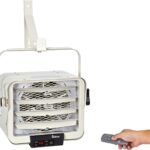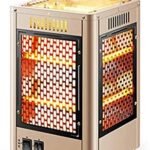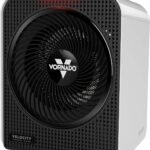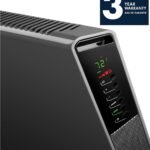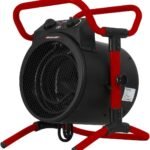Understanding the inner workings of a tankless water heater can be fascinating. This insightful piece offers a clear, concise explanation of how these little technological marvels provide hot water on demand. From their efficient energy use to their compact design, you’ll gain a wealth of knowledge about the function and benefits of a tankless water heater. So buckle up and get ready to illuminate your mind, as you embark on this journey of discovering the brilliant mechanics behind the operation of tankless water heaters.
Understanding Tankless Water Heaters
To understand how tankless water heaters function, you first need to grasp a basic concept that distinguishes them from traditional water heaters.
Basic concept of tankless water heaters
Traditional water heaters store hot water in a tank for future use. Tankless designs, on the other hand, heat water only as it’s needed. Thus, when you turn on your hot water tap, the tankless water heater comes to life, instantly heating the cold water running through the unit. Because of this approach, tankless heaters are often referred to as “on-demand” water heaters.
Difference between tank and tankless heaters
A significant difference between tank and tankless heaters lies in their delivery of hot water. A traditional tank heater will eventually run out of hot water and need time to heat more, while a tankless model delivers hot water indefinitely, as long as water and power supply is maintained. This key distinction can alter your daily routine and determine the best type of heater for your needs.
Components of a Tankless Water Heater
A tankless water heater doesn’t just provide unlimited hot water on demand. It’s also made up of several key components that ensure it operates effectively and efficiently.
Heat exchanger
The heat exchanger is a critical component. It warms the water as it passes through the heater. This piece usually involves either a gas burner or electric element, heating the water rapidly before it’s disbursed to the outlet.
Flow sensor
The flow sensor detects when you turn on a hot water tap and signals the control panel to start the heating process.
Control panel
The control panel manages the entire operation based on data it receives from the flow sensor and thermostat. It initiates the ignition and regulates the burner or heating element.
Gas burner or electric element
Depending on the type of tankless heater, a gas burner or an electric element acts as the heat source. The control panel activates this component once it receives a signal from the flow sensor.
Ventilation system
For gas-powered tankless heaters, a ventilation system carries away exhaust gases to ensure safe operation.
Operation of a Tankless Water Heater
The operation of a tankless water heater involves a progression of steps outlined below:
Sensing demand for hot water
When you open a hot water tap, the water flow sensor detects the water flow initiating the heating process.
Ignition or activation of heating element
Based on the signal from the flow sensor, the control panel prompts the burner or electric element to start heating.
Transfer of heat to water
After ignition, the water flows through the heat exchanger acquiring the heat before it’s routed to your tap.
Temperature Regulation in Tankless Water Heaters
Regulating the water temperature is a fundamental aspect of tankless water heater operation.
Role of thermostats
The thermostat in a tankless water heater monitors the water temperature and communicates with the control panel to maintain desired output temperatures.
Maintaining a steady water temperature
Tankless water heaters ensure a constant temperature by continually adjusting the burner or heating element’s intensity relative to the water flow rate.
Safety features to prevent overheating
To prevent overheating, tankless water heaters are equipped with safety features like temperature sensors, cut-offs, and relief valves, which trigger if the water or unit temperature gets too high.
Energy Efficiency in Tankless Water Heaters
One of the main benefits of tankless water heaters is their energy efficiency.
Comparison with tank heaters
Compared to tank heaters, tankless models don’t need to keep a large volume of water heated at all times. This absence of standby heat loss makes them far more energy-efficient.
Energy saving features
Many tankless models also come with energy-saving features such as modulating burners that adjust the heat output based on demand, thereby conserving energy when full power isn’t needed.
Impact on utility bills
Due to their high energy efficiency, tankless water heaters can significantly reduce your utility bills.
Types of Tankless Water Heaters
There are three main types of tankless water heaters, each with its characteristics and advantages.
Gas-fired tankless heaters
Gas-fired tankless heaters use a gas burner to heat the water and are often more powerful and able to heat more water faster than their electric counterparts, making them ideal for large households.
Electric tankless heaters
Electric tankless heaters use an electric element to heat the water. While they may not be as powerful as gas-fired models, they are generally more accessible and easier to install, requiring no vents or gas lines.
Point-of-use tankless heaters
Point-of-use water heaters are small units designed to service one specific location, such as a bathroom or kitchen sink. They are a practical solution when only one or two points need hot water.
Benefits of Tankless Water Heaters
Tankless water heaters come with several benefits that make them a desirable option.
Energy and cost savings
Perhaps the most significant advantage is the potential for energy and cost savings. These come via the heater’s efficient operation and absence of standby heat loss.
Constancy in hot water supply
Unlike traditional heaters, tankless units can provide hot water continuously.
Longevity
Tankless water heaters generally last longer than tank heaters, often up to 20 years with proper maintenance.
Space saving design
Their compact, often wall-mounted design saves valuable space in your home.
Drawbacks of Tankless Water Heaters
While there are many benefits, it’s also important to consider the potential drawbacks of tankless water heaters.
Higher upfront cost
Tankless models are typically more expensive to purchase and install than traditional water heaters. However, their longevity and energy-saving capabilities often offset the upfront costs over time.
Complex installation process
The installation process for a tankless water heater can be complex and might require professional help. This could include plumbing or electrical upgrades.
Possible inadequacy for larger households
For larger households or those with high hot water demands, one tankless unit may not be enough, and multiple units may be needed.
Maintenance of Tankless Water Heaters
Like any appliance, keeping your tankless water heater in top working condition requires regular maintenance.
Periodic descaling
Over time, minerals in the water can build up inside the unit, reducing its efficiency. Periodic descaling can help to prevent this.
Checking for leaks
Regularly check the unit and connections for leaks to prevent water damage and improve efficiency.
Annual inspection by a professional
It’s also recommended to have an annual inspection by a professional to ensure the unit’s safe and efficient operation.
Selecting a Suitable Tankless Water Heater
Choosing the right tankless water heater involves several considerations.
Determining the right size
The “size” of a tankless water heater is determined by its flow rate, measured in gallons per minute (GPM). To select the right size, calculate the maximum amount of hot water you’ll need at any given time.
Choosing between gas and electric
Your choice between gas and electric will depend on the availability and cost of each fuel source, as well as your hot water needs.
Deciding on point-of-use or whole house heater
Point-of-use heaters can be an excellent choice for single applications, but for multiple hot water outlets, a whole-house model would be better.
Comparing different brands and models
Finally, it’s a good idea to compare different brands and models to find the best quality and value for your money. Consider factors like warranty, price, energy efficiency, and customer reviews in your decision-making process.

